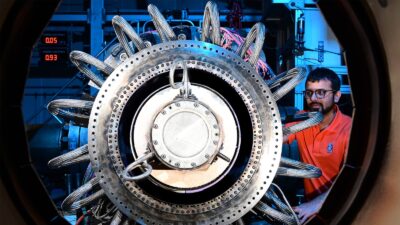A Stocks and Shares ISA is an excellent vehicle to help investors earn an additional income, in my opinion. That’s because this tax wrapper shields investments from capital gains tax and dividend tax.
Right now, up to £20,000 a year can be placed in this ISA per tax year. I’d aim to maximise this allowance as much as possible. That’s because to earn a five-figure second income, I’ll need a sizeable pot.
Please note that tax treatment depends on the individual circumstances of each client and may be subject to change in future. The content in this article is provided for information purposes only. It is not intended to be, neither does it constitute, any form of tax advice. Readers are responsible for carrying out their own due diligence and for obtaining professional advice before making any investment decisions.
A six-year ISA plan
To earn £11,737 a year in dividend income, I calculate that I’ll need around £150,000. Although this might sound like a large number, let’s break it down.
If I put aside £20k a year, it would take around 7.5 years to reach my target pot size. That said, I should be able to reduce this to just six years by regularly investing the £20k every year.
In addition, I should reinvest the annual dividends. By doing so, the magic of compound interest will kick in and my money should grow faster.
This all assumes I manage to earn an investment return of, say, 8% a year including dividends. As this is a long-term average stock market return spanning multiple decades, I’m comfortable in using it as an assumption.
But bear in mind, if my investment falls short it would take longer to reach my target.
High-dividend shares
With thousands of shares to choose from, stock-picking can often be a minefield. But a few stock characteristics can narrow down the options and simplify the decision-making process.
I’d aim to build a basket of around 10-15 well-selected shares. All of which should pay a dividend. Some of these should be high-dividend shares like Phoenix Group, which currently has a chunky 10% dividend yield.
Although there are some excellent dividend shares that have a double-digit yield, they warrant some caution as high yields aren’t always sustainable.
That’s why I’d also own a selection of shares that offer around 3%-5%. This might seem low, but note that some companies manage to grow their payments over time.
By doing so it can have an amplified effect on an investor’s dividend income.
Targeting dividend growth
For instance, let’s consider BAE Systems. It currently has a 3% dividend yield. But its annual dividend has tripled over the past 20 years. The end result is that investors who bought 20 years ago now enjoy a whopping 17% yield on the price they paid.
To find the next BAE Systems, I’d focus on companies that look likely to grow earnings over time. After all, dividends are typically paid from earnings.
In particular, I’m looking for steadily growing sales and profits. I also want to see a double-digit return on capital employed and signs of a competitive advantage.
Bear in mind that individual shares carry risks and companies can face challenges. But by owning a basket of shares across a variety of industries, I’d aim to spread the risk and avoid putting all my eggs in one basket.








